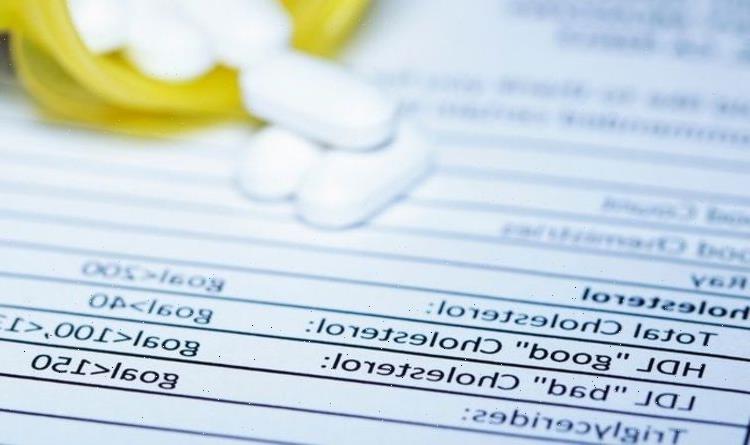Cholesterol symptoms: The signs of high cholesterol on face
High cholesterol: Nutritionist reveals top prevention tips
We use your sign-up to provide content in ways you’ve consented to and to improve our understanding of you. This may include adverts from us and 3rd parties based on our understanding. You can unsubscribe at any time. More info
The most worrying thing about high cholesterol is its reputation as a “hidden killer”. It often goes unnoticed as it rarely produces symptoms so it’s almost impossible to know if you have it without tests. But could the signs of high cholesterol be written on your face?
What is cholesterol?
High cholesterol is when you have too much of a fatty substance known as cholesterol in your blood.
Having some cholesterol in your blood is healthy, in fact, it is essential for cell function.
But having too much can block your blood vessels which will increase the risk of having heart problems or a stroke.


Although you can inherit high cholesterol levels it is usually brought on by lifestyle choices.
Being overweight, eating too much fatty food, not exercising enough as well as smoking and drinking alcohol excessively can cause levels to soar.
What are the signs of high cholesterol?
The NHS website says high cholesterol does not cause symptoms.
Sufferers are usually asymptomatic so it’s very hard to recognise the condition.
But some experts believe you may be able to spot the condition early through signs on your face.

The American Academy of Dermatology (AAD) explain that yellow or orange waxy growths on your skin could point towards unhealthy cholesterol levels.
On their website, they say: “If you see yellowish-orange growths on your skin, you may have deposits of cholesterol under your skin.
“These painless deposits can appear in many areas, including the corners of your eyes, lines on your palms, or the backs of your lower legs.
“If you notice these growths on any area of your skin, see your doctor.”

Although these growths may be painless they should not be ignored.
These painless deposits can appear in many areas, such as the corners of your eyes, lines on your palms, or even on the backs of your lower legs, so if any appear it’s worth getting them checked out.
The NHS say the only way you can know for sure if you have high cholesterol is through a blood test.
Your GP might recommend you have a blood test to check if they suspect your levels might be unhealthily high.
They will likely suggest a test if you are overweight, have diabetes, are over 40 or if you have a family history of high cholesterol as these conditions will massively increase your risk of having the condition.
Fortunately having high cholesterol is reversible, simple lifestyle adjustments should bring your cholesterol down to a healthy level and a doctor may recommend medication to help.
You can lower your cholesterol by exercising frequently, eating healthy, quitting smoking and reducing your alcohol consumption.
If you are concerned about your health and cholesterol, speak to your doctor.
Source: Read Full Article
